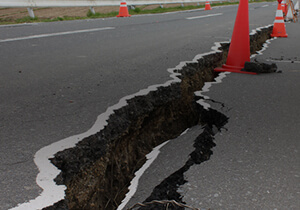How to protect yourself in a flood

Matters to be careful about when evacuating
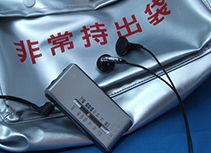
Collect accurate information and evacuate as soon as possible
Pay attention to updated weather, disaster, and evacuation information on TV, radio, or the Internet.
Dress comfortably
Carry your belongings in a backpack and keep your hands free. Wear sneakers rather than rain boots.
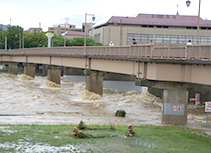
Floodwater has strong momentum
Because the flow of floodwater has strong momentum, if the depth of the water becomes as high as knee level, it is difficult to walk through even for adults. For emergency evacuation, staying in a tall robust building is also an option.
Floodwater is murky
Floodwater is brown and cloudy, making it impossible to see the edge between the road and waterway, or open manholes. If you have to move through the water, use a stick or something to check below your feet as you move along.
*Source: Ministry of Land, Infrastructure, Transport and Tourism, "River Disaster Information"
Flood depth and evacuation
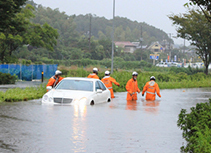
When flooding occurs, as the floodwater deepens, walking and automobile travel becomes hindered, making evacuation difficult.
Driving a vehicle
Inundation depth ranking of Chiba Prefecture tsunami inundation forecast map
| ▼ Flood depth | ▼ Automobile travel |
|---|---|
| 0 to 10cm | No problem with automobile travel |
| 10 to 30cm | Brake performance declines, making it necessary to move the car to a safe place |
| 30 to 50cm | The engine stops, making it necessary to escape from the car. |
| 50cm or more | The car floats and power windows do not work. The driver/passengers are trapped in the car and washed away with it. The situation becomes extremely serious. |
* Reference: Chiba Prefecture Guidelines for Tsunami Evacuation Planning(Japanese)
When puddles have formed in basin-like locations such as underpasses below roads or train tracks, do not enter and turn back.
Also, because it is not possible to measure the depth of a puddle just by looking at it, once entered, it might be deeper than expected. However, as long as you are in the driver’s seat, even if the water level becomes higher than the car floor, water will not immediately leak in. For that reason, by the time you sense danger, it is very possible that the car is floating, will not move back and forth, the engine air duct has sucked in water, water pressure had blocked the exhaust pipe, the engine has stopped, and you are stuck.
In the unlikely event that the car is submerged and water has flooded into the car, stop the car immediately and calmly turn the engine off.
When submerged in water, what can you use to break the window? (JAF USER TEST)
Experiment video
Test setting
On the assumption that doors and windows do not open in a submerged vehicle, we tested the possibility of breaking the window with five items likely to be in the car and three emergency hammers, to verify the appropriate tool to use, to escape.
Test content
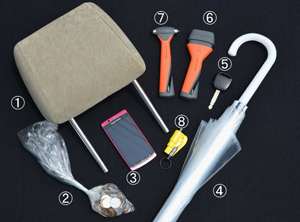
- We tested the possibility of breaking the window by the driver’s seat with things that might be found in a car.
- When breaking a window, it is common to break a side window but we also tested the laminated windshield. Items used to try to break the window
- 1)Headrest
- 2)Plastic bag of coins
- 3)Smartphone
- 4)Plastic umbrella (with plastic head)
- 5)Car keys
- 6)Emergency hammer (window punch)
- 7)Emergency hammer (hammerhead)
- 8)Emergency hammer (mini window punch)
List of window breaking test results
◯ Broke × Did not break
| 1) Headrest | × | 5) Car keys | × |
| 2) Plastic bag of coins | × | 6) Emergency hammer (window punch) | ◯ |
| 3) Smart phone | × | 7) Emergency hammer (hammerhead) | ◯ |
| 4) Plastic umbrella (with plastic head) | × | 8) Emergency hammer (mini window punch) | ◯ |
Test results
- The window did not break with items 1) to 5). The only items that broke the window were the emergency hammers.
- However, the front windshield did not break even with an emergency hammer, as it was laminated glass.
Types of emergency hammers

Emergency hammers: functions and caution
When the seatbelt does not unbuckle, use the seatbelt cutter on the emergency hammer to escape.
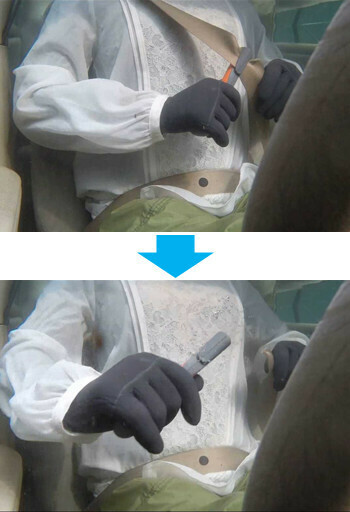
The front windshields will not break even with an emergency hammer.
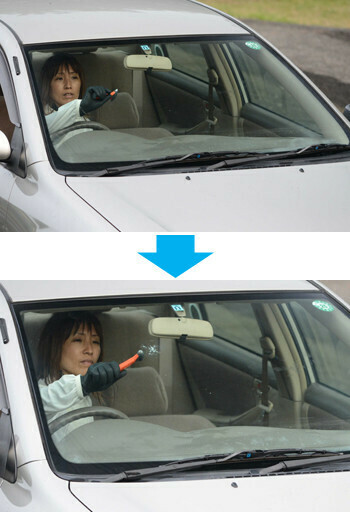
Summary
- In addition to the difficulty of applying force in a confined vehicle, the water resistance from the car being submerged will prevent breakage with basically anything but emergency hammers.
- It is important to have an emergency hammer within reach in the car, in case of an emergency.
- Emergency hammers also have seatbelt cutters, so when the seatbelt does not unbuckle, it is possible to cut it off.
- When breaking a window with an emergency hammer, it is more effective to break it near one of the four corners.
